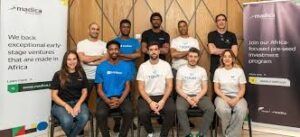Cape Town-based insect protein startup Inseco shut down operations and sold assets to industry partners seven years after founding—three years after raising one of South Africa’s largest seed rounds at $5.3 million—citing electricity crisis, poor capital allocation decisions, and operational execution failures.
Founded in 2018 by Jack Chennells and Simon Hazell, Inseco bred black soldier fly larvae on organic waste from food processors, converting discarded materials into protein meal, oil, and fertilizer for aquaculture, pet food, and poultry markets. The company won South Africa’s Global Cleantech Innovation Program in 2019 and positioned itself as Southern Hemisphere insect protein leader.
Co-founder Hazell acknowledged in post-mortem analysis that rapid scaling, poor hiring decisions, slow pivoting, and deferred generator purchase during South Africa’s “load-shedding” electricity crisis contributed to failure. The shutdown reflects broader challenges facing the insect protein sector as French pioneers Ÿnsect and Innovafeed also struggle amid a tightened funding environment.
Infrastructure Dependency as Emerging Market Risk
South Africa’s chronic power outages—four-hour blackouts known as “load-shedding”—created operational havoc for Inseco’s insect colonies. Manufacturing biological products at scale requires stable temperature and environmental conditions. Power disruptions caused cascading problems across facilities despite backup power for essential ventilation equipment.
The company deferred purchasing a large generator system to manage capital allocation, anticipating lower power outage risk. When load-shedding intensified, Inseco eventually acquired a generator, but by then power disruptions had subsided, leaving investment underutilized.
This decision sequence reveals the capital allocation trap facing hardware startups in emerging markets. Investing in infrastructure resilience (generators, solar, batteries) diverts capital from growth initiatives. Deferring infrastructure spending creates operational vulnerability. Timing misalignment—buying generators after crisis subsides—wastes scarce capital.
For investors evaluating emerging market climate tech and agtech, infrastructure dependency represents systemic risk distinct from developed markets. European or US insect protein startups assume reliable grid power. South African operations require defensive capital expenditure that doesn’t exist in stable power environments.
Post-Mortem Acknowledges Execution Failures
Hazell’s public acknowledgment of “rapid scaling, poor hiring decisions, and slow pivoting” provides rare transparency uncommon in startup failures. Most founders attribute closures to market conditions or funding environment without acknowledging internal errors.
The “slow pivoting” admission suggests Inseco recognized margin improvement opportunities through technology development but didn’t prioritize them adequately. This pattern—identifying strategic priorities but failing to execute with sufficient speed—kills many startups that understand their problems but can’t reorganize quickly enough.
Poor hiring decisions at capital-intensive biology companies create compounding damage. Unlike software startups where bad hires slow feature development, biotech/agtech bad hires can contaminate production batches, compromise quality control, or create safety issues requiring expensive remediation.
Capital Environment Shift Impacts Capital-Intensive Models
Inseco raised a $5.3 million seed during the zero-interest-rate era when investors funded hardware-intensive models expecting subsequent rounds would provide scaling capital. The 2022-2024 funding environment shift left many such companies stranded.
Insect protein requires substantial capital for facility construction, equipment procurement, R&D, and working capital (insect colonies require months reaching productive maturity). Software companies achieve product-market fit on seed capital and raise Series A for scaling. Biology companies burn seed capital proving concepts and need Series A for initial production scale.
When Series A funding tightens, hardware startups face binary outcomes: achieve self-sustainability on seed capital (rarely possible) or shut down lacking growth capital. Inseco fell into this trap—seed capital insufficient for sustainable operations, Series A environment too constrained for capital-intensive models.
Sector-Wide Challenges Beyond Single Company
Ÿnsect (France, raised $500+ million) and Innovafeed (France, raised $250+ million) both face operational and financial challenges despite substantially larger capital bases than Inseco. This suggests systemic sector issues beyond individual company execution.
Potential sector-wide problems include:
Margin structure: Insect protein production costs may not compete with conventional protein sources (soy meal, fish meal) at current technology maturity and scale.
Market adoption: Feed and pet food manufacturers may resist switching from established protein sources requiring facility modifications and regulatory approvals.
Regulatory barriers: Many jurisdictions lack clear regulatory frameworks for insect-based ingredients, slowing market development.
Technology readiness: First-generation insect farming may require additional innovation cycles before achieving commercial viability.
The global insect protein market currently stands at approximately 10,000 metric tons annually with projections reaching 500,000 metric tons by 2030. However, if leading companies with substantial capital struggle achieving profitability, market growth projections may prove optimistic.
Asset Sale Provides Partial Recovery
Inseco sold equipment and intellectual property to industry partners rather than complete liquidation. This suggests assets retained value for buyers with different operating contexts or cost structures.
Potential acquirers include:
Larger insect protein companies: Established operators may acquire technology or equipment at distressed prices, integrating into existing operations.
Feed manufacturers: Companies with adjacent operations may utilize Inseco’s equipment for captive insect protein production.
Research institutions: Universities or government labs may acquire IP for continued development.
Geographic arbitrage buyers: Companies in stable power environments may relocate equipment where infrastructure risks don’t exist.
The asset sale provides some investor capital recovery but likely represents small fraction of $5.3 million invested. Early-stage investors typically lose 100% on failed companies or recover 10-20% through asset sales.
Lessons for Climate Tech and Agtech Investors
Inseco’s failure provides several investment thesis warnings:
Infrastructure dependency risk: Emerging market operations requiring stable utilities face systemic risks developed market competitors don’t experience.
Capital intensity timing: Hardware companies need continuous funding through profitability. Seed rounds don’t provide sufficient runway.
Sector maturity assessment: First movers in emerging sectors often fail despite sound technology if market adoption or unit economics take longer than anticipated.
Defensive CapEx requirements: Infrastructure resilience investments (generators, solar, batteries) compete with growth initiatives for capital in resource-constrained startups.
Execution vs. market timing: Even well-capitalized companies with sound technology can fail if sector-wide challenges (margins, adoption, regulation) aren’t resolved.
Market Outlook for Insect Protein
Despite Inseco’s failure, Hazell maintains optimism about sector potential “if companies can unlock better margins.” This conditional optimism acknowledges that current technology and scale don’t support viable economics.
The 50x growth projection (10,000 to 500,000 metric tons by 2030) requires either: dramatic cost reductions through technology improvement and scale, or regulatory changes mandating sustainable protein sources creating demand regardless of cost competitiveness.
Feed and pet food sectors represent most viable near-term markets. Aquaculture particularly interests investors because fish meal prices create a price ceiling for insect protein. If insect production costs drop below fish meal, substitution becomes economically rational.
However, if leading companies with $250-500 million in capital struggle achieving profitability, later entrants face questions about whether additional capital solves fundamental unit economics problems or just delays inevitable failure.
Investor Takeaway
For venture investors, Inseco represents cautionary tales about capital-intensive emerging market hardware plays during funding environment shifts. The company possessed:
✅ Proven technology (black soldier fly cultivation works)
✅ Market validation (won innovation awards, attracted $5.3M seed)
✅ Scaling plan (facility construction underway)
❌ Infrastructure resilience (load-shedding vulnerability)
❌ Margin pathway (slow technology development for cost reduction)
❌ Funding continuity (Series A market closed before profitability)
The combination of external shocks (power crisis, funding environment) and internal execution issues (hiring, capital allocation, pivoting speed) created death spiral where fixing one problem consumed resources needed for others.
For LPs evaluating emerging market climate tech and agtech funds, Inseco’s failure highlights importance of portfolio construction including infrastructure risk assessment, defensive capital requirements, and funding environment sensitivity in investment diligence beyond pure technology and market opportunity evaluation.








